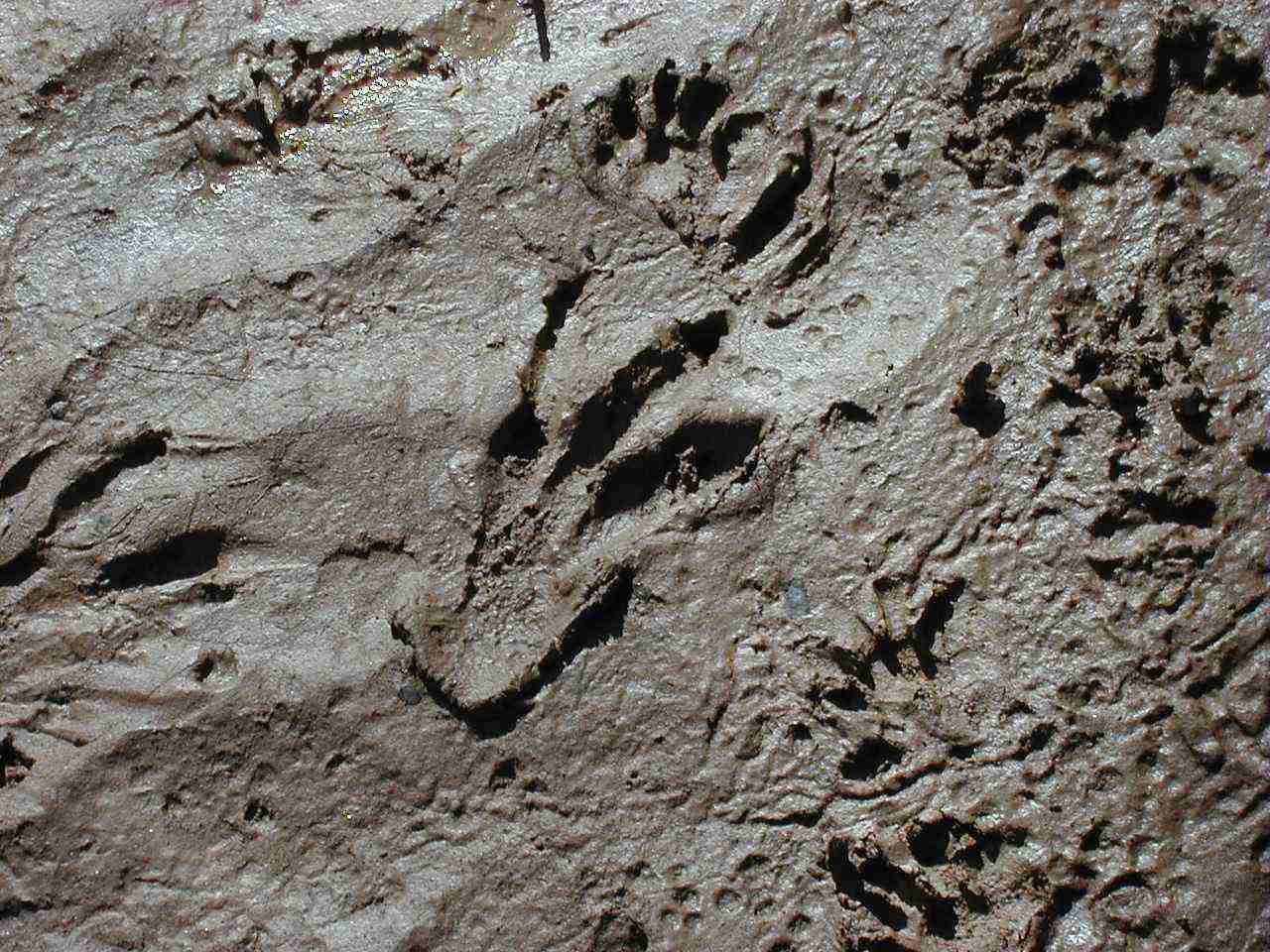(Peromyscus leucopus)
Measurements:
Front Track: 6 (L) x 6 (W)mm
Rear Track: 16 x 8mm
Trail Width: 3.8cm
Stride (slow bound): 8.7cm
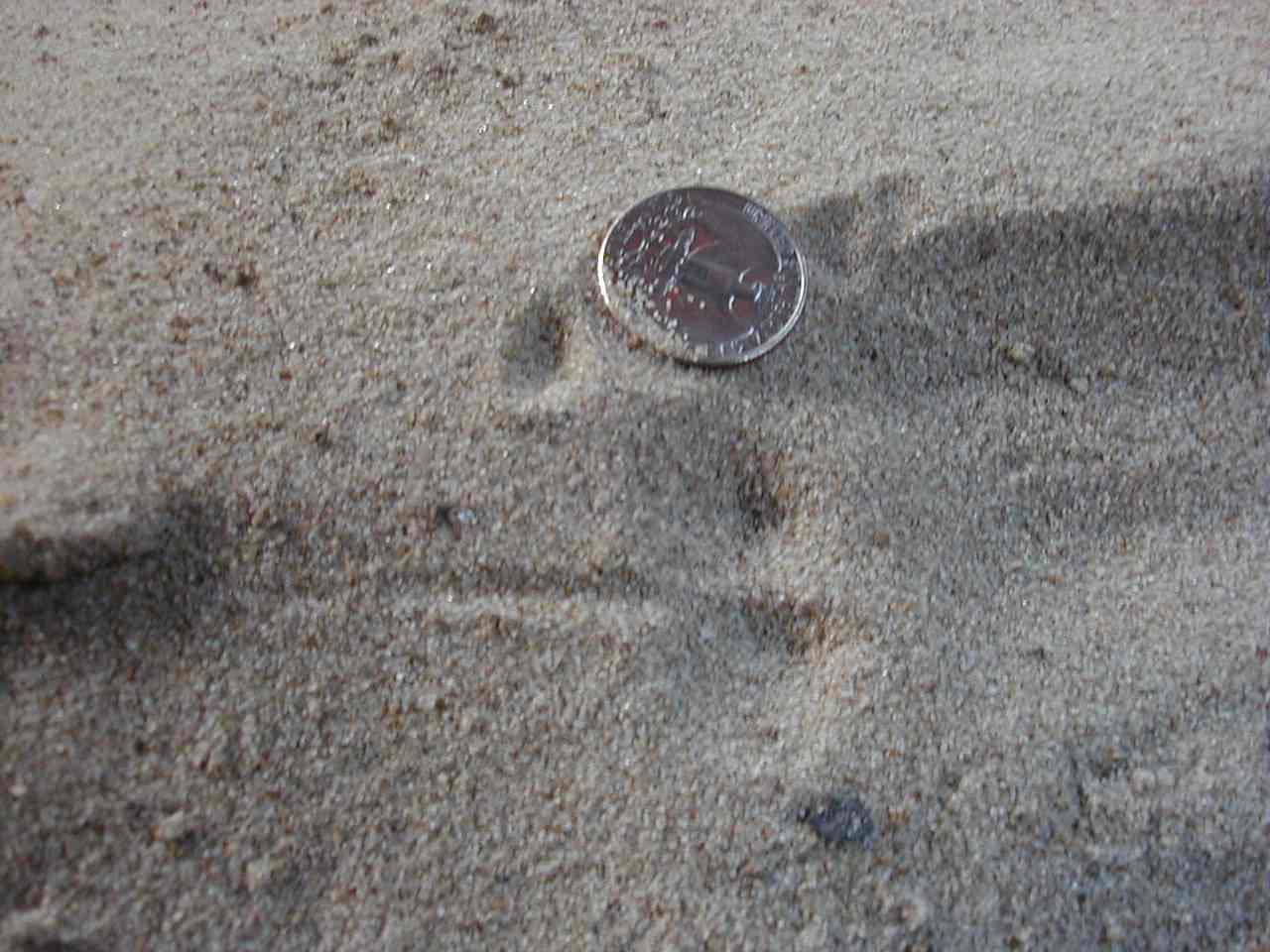
White-footed mouse bounding through dry sand. This mouse was headed toward the right of the screen, as the tail drag to the left of the two foot impressions indicates. All four feet actually landed in these two foot impressions, but caving in of the dry sand yields only two impressions. If this were a meadow jumping mouse, the tail drag would be longer. House mice, other Peromyscus, and golden mice would leave similar tracks.
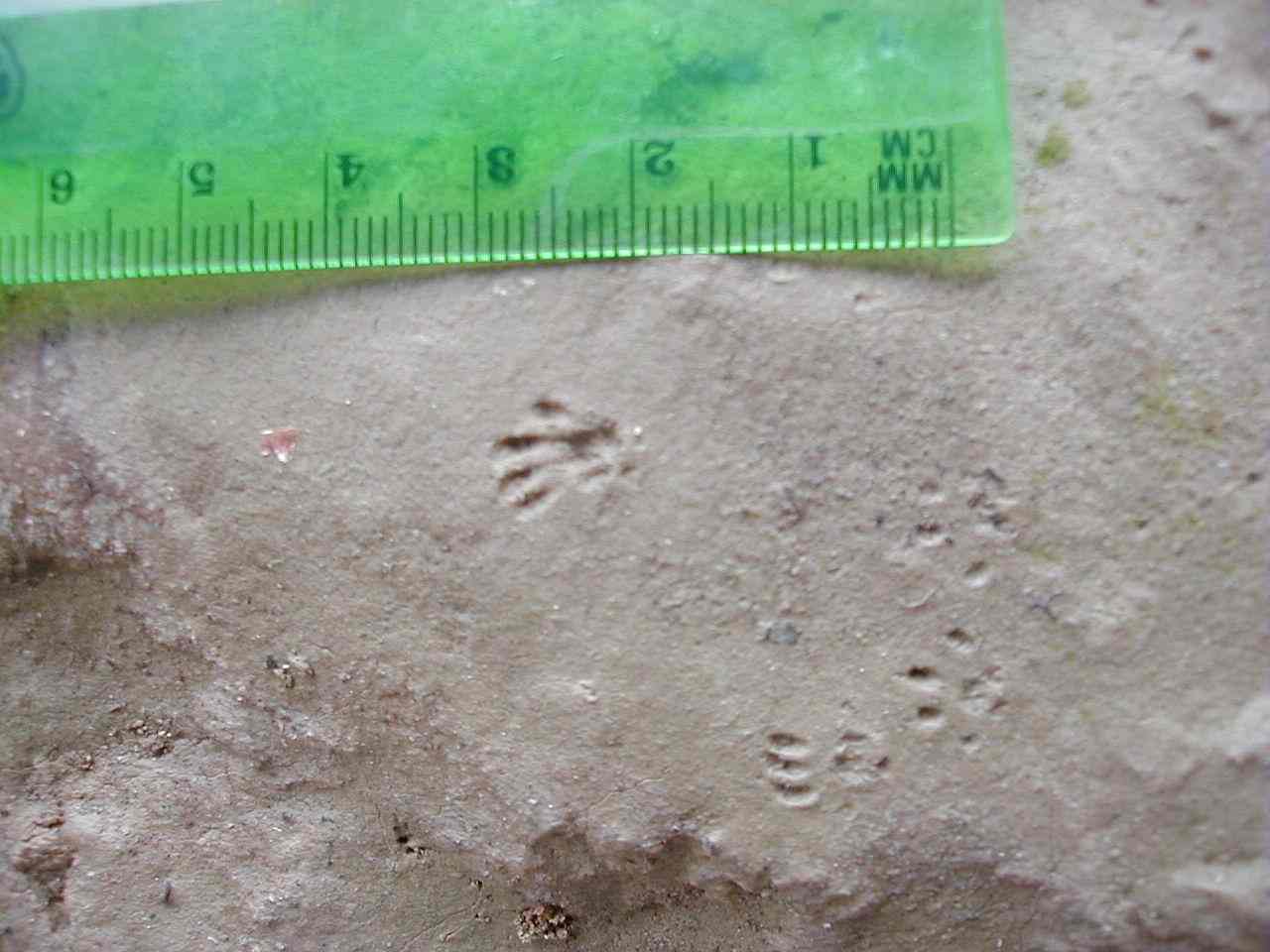
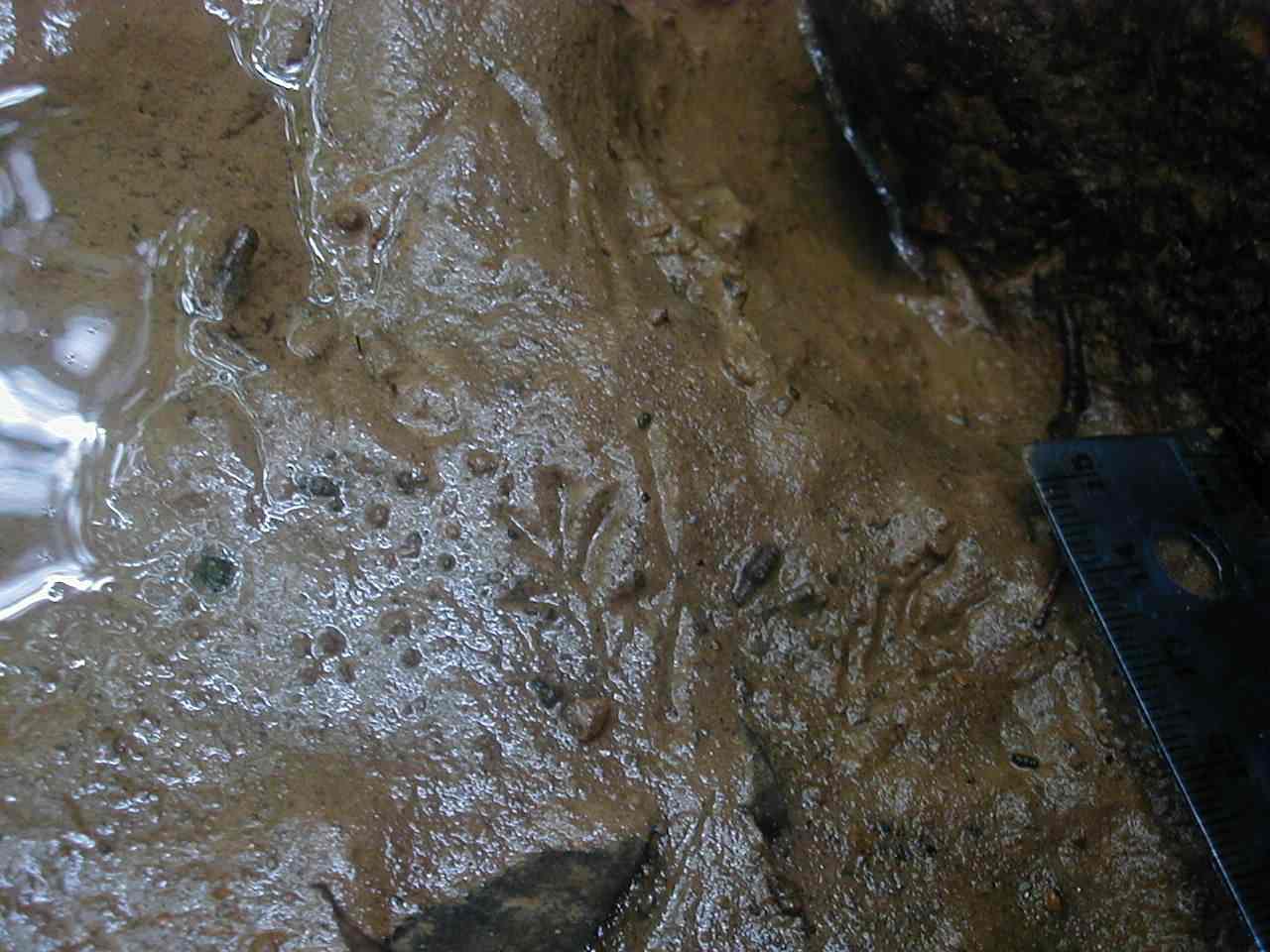
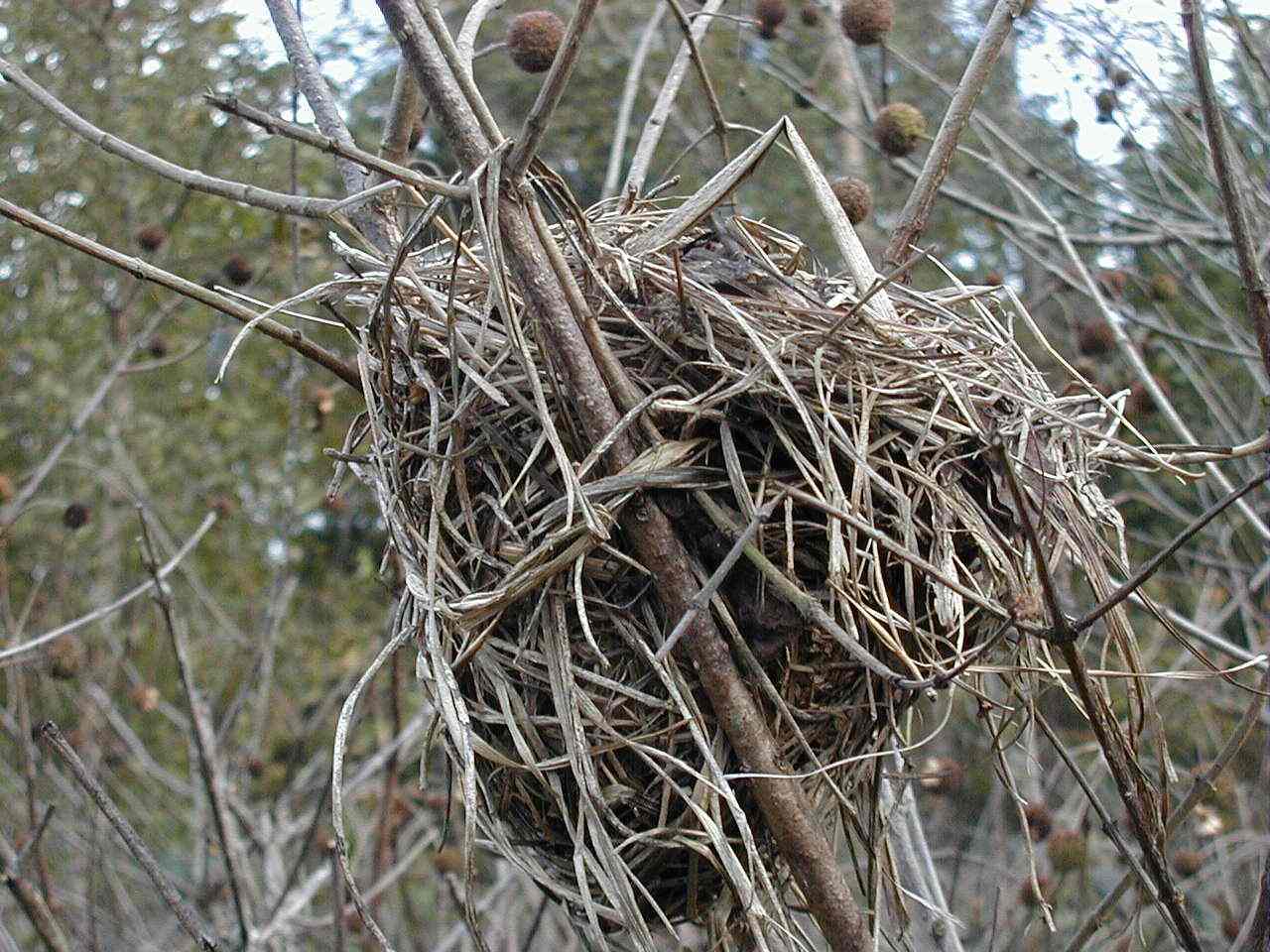
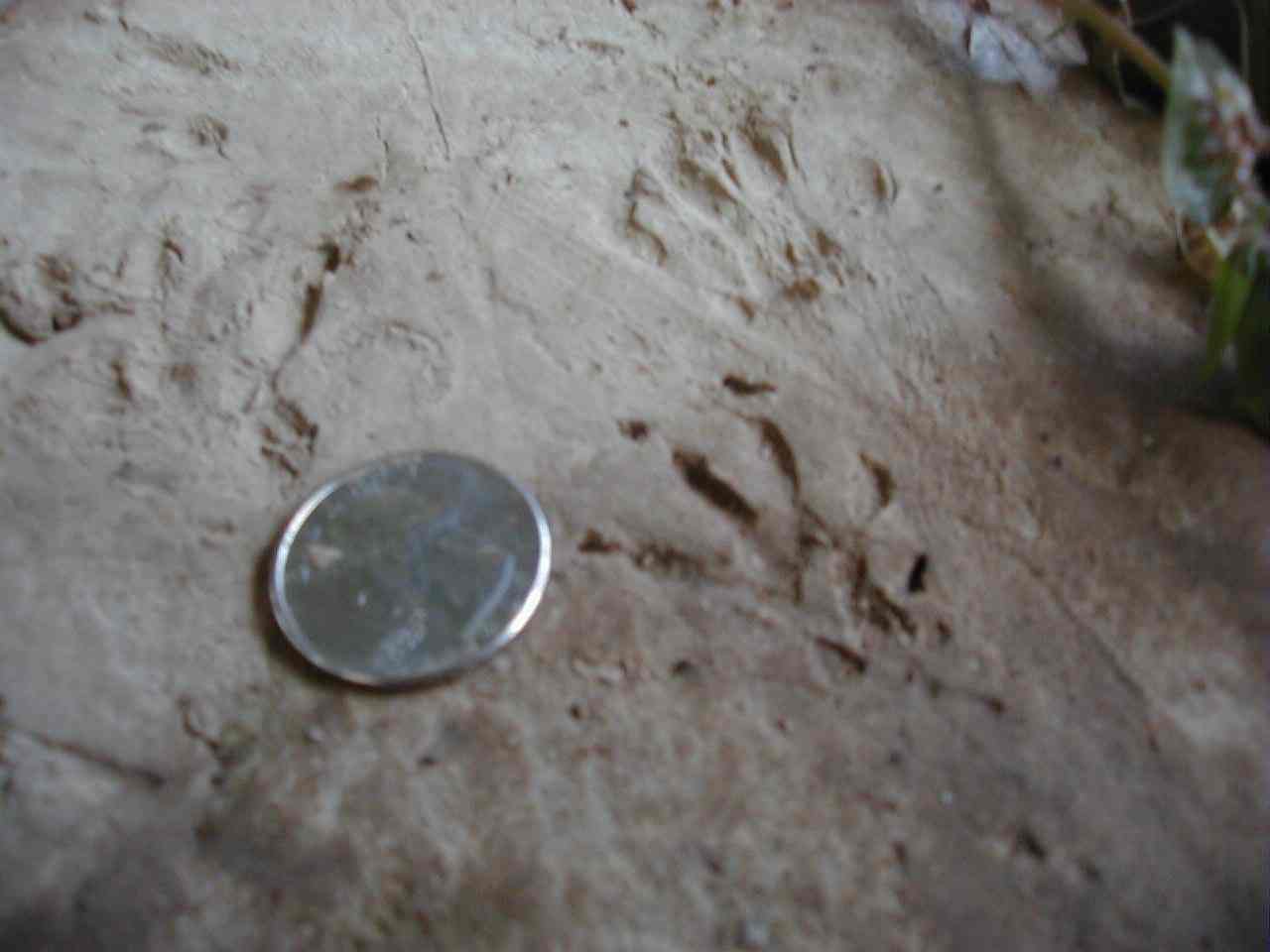 Muskrat
(Ondatra zibethica)
Muskrat
(Ondatra zibethica)
